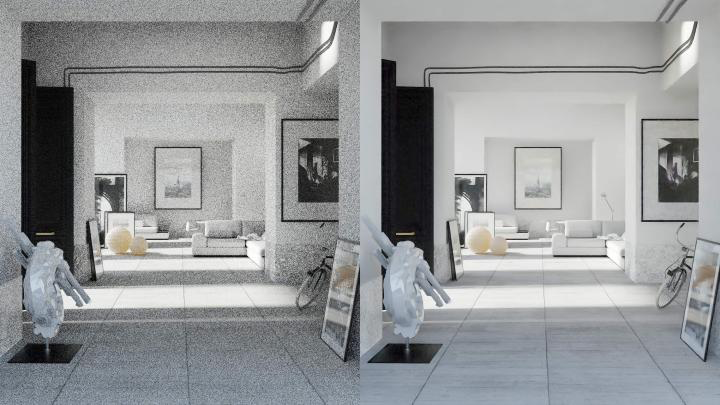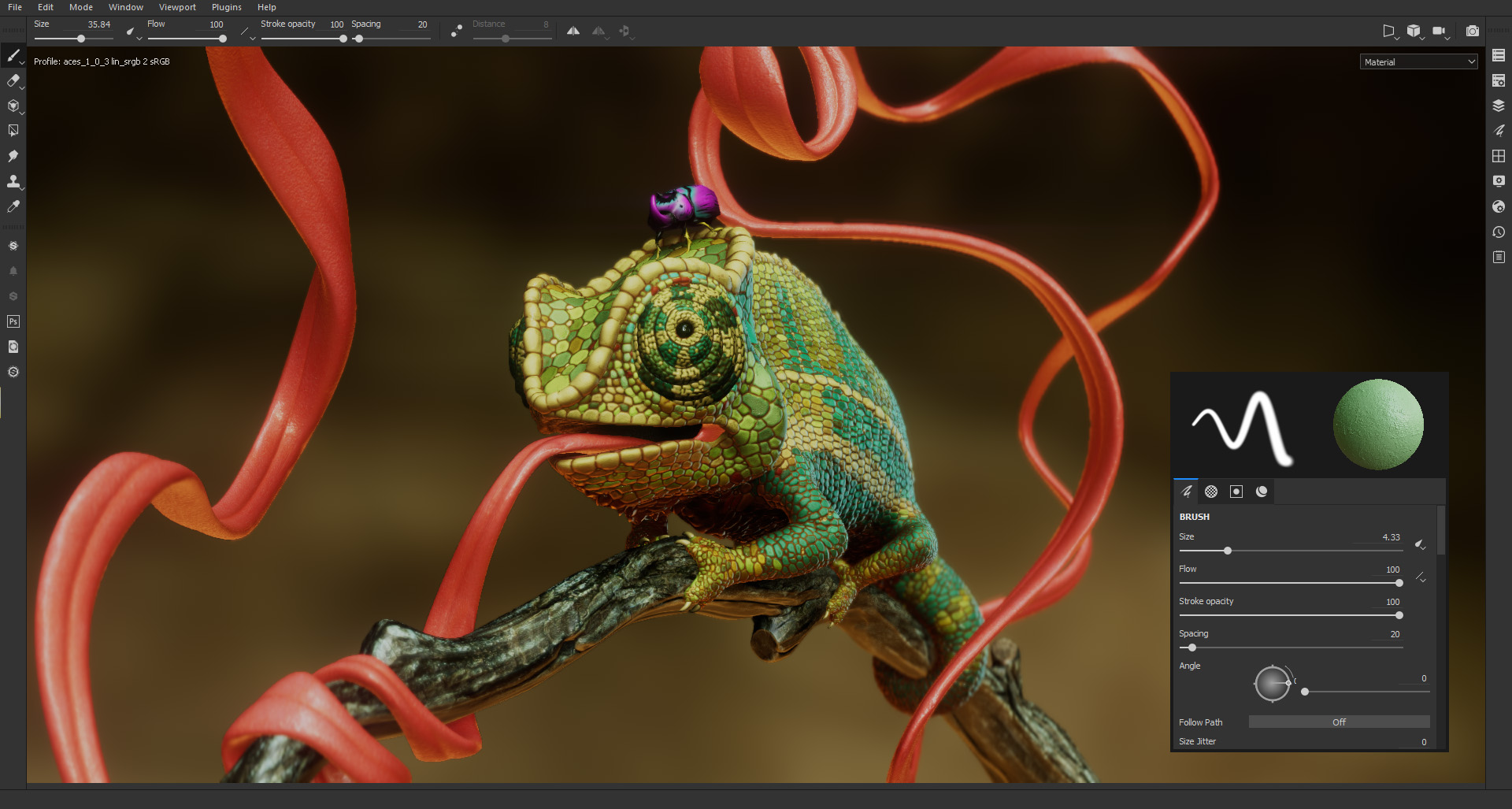The best new 3D tools for 2019
The new (or newly updated) kit that should be in your toolbox this year.
A new year means new resolutions, which in the world of 3D means checking the lay of the land to make sure the tools you're used are the still the ones that are best suited to your needs as an artist. To kick off 2019 properly, we've gathered together the tools you should consider adding to your 3D art toolkit. All of the applications in this list are either new or have undergone a big update recently, so they're worth a fresh look.
01. MODO 12.2

While MODO has been around for over a decade now, the latest version has definitely set out MODO’s stall for the future. With the integration of the latest rendering tools such as AMD’s ProRender and Nvidia’s OptiX Denoiser (pictured) with a heavily revamped and streamlined UI.
MODO offers artists a strong platform to consider with its best-in-class subdivision modelling toolset – which can be leveraged to work with game engines easily through customised layouts and exporters. MODO 12 has also introduced a VR viewport (on Windows only) that allows artists to get close to their models in a way that is simply is not possible in other digital content creation applications.
02. Redshift 3
Redshift has earned its place in the industry as one of the leading GPU-rendered engines – its biased underpinnings allows much more flexibility than unbiased alternatives. Redshift is also famed for its very clean animations across a wide range of host applications, as can be seen in the Bruton Stroube video above that uses Redshift.
In 2019, Redshift 3 will launch with a refactored core that increases the trace depth limit, allowing more indirect light bounces and improved transparency levels. Even faster render speeds are coming with Redshift 3 thanks to optimisation for the latest Nvidia RTX cards, as well as a wealth of other new features later in the year, including distributed and network rendering.
03. V-RAY Next
While there are newer rendering kids on the block, Chaos Group has been hard at work maintaining and improving V-Ray with the launch of V-Ray Next, currently available for Autodesk 3DS Max and Autodesk Maya. V-Ray Next features GPU acceleration that offers a 2x speed bump over previous GPU V-Ray options. A much improved IPR for lightning quick playblasts, crypto matte output and volume rendering all mean that Chaos Group is continuing to keep V-Ray amongst the leaders of 3D rendering technology.
04. Octane 4
Released in November 2018, Octane 4, the leading unbiased GPU render engine, promises a lot for users in 2019. Octane already had one of the fastest interactive previews of any render engine, but with the addition of OTOY's own Brigade real time path tracing engine, Octane 4’s preview is between 10 and 100 times faster than previous versions. Out of Core geometry support is another feature of Octane 4, along with new denoising techniques with the implementation of the machine learning-based Spectral AI denoiser (video above).
Daily design news, reviews, how-tos and more, as picked by the editors.
Hopefully Octane 4 will make good on its promise of allowing Octane to work with any GPU, as OTOY has worked hard behind the scenes over the past few years to maximise Octane's compatibility.
05. Gravity Sketch
VR is fast realising its potential as a true creative tool. Price discounts on VR headsets, coupled with great software have meant that many areas of creative design are embracing VR. At the forefront of this creative software revolution is Gravity Sketch. When used as a concept development tool for 3D creation, there is little that can touch Gravity Sketch's ability to immerse an artist in their design.
By purposefully limiting the toolset and features, Gravity Sketch enables artists to sketch in 3D and then use the intuitive snapping, surfacing and patch tools to create prototype models that can be exported as an OBJ or FBX into a full 3D or CAD application to be be refined. However, the lighting and texturing tools are good enough in Gravity Sketch to create a unique model sheet.
06. AMD ProRender
A number of our highlights for 2019 are render engines that make the most of the new GPU hardware on its way in 2019. But many artists have already paid a significant amount for their 3D modelling software, and understandably begrudge having to shell out for a third party render solution no matter how good it is. Thankfully AMD has realised that this is an issue and made its hybrid CPU/GPU render solution AMD ProRender available for free.
AMD ProRender is available as a plugin for Autodesk Maya, 3DS Max, Blender and SolidWorks as well as being the inbuilt accelerated render solution for Maxon Cinema 4D and MODO. There is also support for ProRender in Unreal Engine. ProRender is already an industry standard, is easy to learn and comes with a great inbuilt material library (with the plugin versions). It works on practically any Windows or Mac computer and is well worth checking out in 2019.
07. Houdini 17
SideFX, the developer of Houdini, has recently released the latest version of its procedurally focused 3D application. Houdini 17 Banshee features the OpenCL accelerated Vellum cloth solver for better simulations, with support for multi-layered cloth elements and dynamic constraints for stitching, bracing and tearing. Vellum also works across hair and grooming.
There is a new material-based destruction tool paradigm that pre-fractures materials such as concrete, glass and wood and then builds networks to tie the resulting system together. In fact there are too many new features to list here.
As ever, Houdini starts with the free Apprentice edition, but the Indie version is great value for freelancers and is also available for subscription on Steam. Take a look at our 15 top Houdini tips to get started.
08. Cinema 4D 20
Many Cinema 4D users have started looking at Houdini to cover some of the shortcomings in Maxon’s digital content creation software. However, the release of Cinema 4D R20 changes all that by offering a whole new motion graphics fields-based paradigm, node-based materials, improved viewport performance, and improvements to the hybrid ProRender integration including features like motion blur and SSS (see these in action in the video above by f°am Studio).
Couple these with modelling improvements such as the new CAD importers and the whole new volume modelling paradigm, and Cinema 4D becomes one of the most compelling, easy to learn and stable digital content creation applications available in 2019. It is rightly being awarded an Academy Award for its MoGraph toolset in February.
For advice and inspiration, take a look at our roundup of Cinema 4D tutorials and Cinema 4D tips.
09. Blender 2.8
It is hard to believe that Blender, the open source digital content creation application, is now 25 years old. There are few, if any, applications that can do as much as Blender can – from 3D modelling and sculpting, to animation and compositing, all available for the perfect price of free (take a look at our roundup of brilliant Blender tutorials for inspiration).
With the recently released Blender 2.8 beta and accompanying roadmap, 2019 looks like an exciting year for existing and new users alike. Blender works on nearly every platform and the improvements in Blender 2.8 concentrate on making Blender easier to use, with a new UI, the Eevee real-time renderer (which works both for viewport and final render) and a raft of other new features.
10. Substance Painter

Ladies and gentlemen, we may have a winner for the standalone texturing application of choice for the industry. Substance Painter seems to have become the default tool for texturing assets, with a constantly updating toolset that strives to match the creativity of its users. After a gangbuster year in 2018, Allegorithmic has spent the holiday break showing off some the stunning creations Substance Painter has been involved with, from games to CGI.
When coupled with the rest of the Substance suite applications and the fantastic Substance Source asset library, this is a toolset that works as a linking tissue between 3D and game creation applications for keeping material looks consistent. It is deserving of any CG artist's attention in 2019.
Read more:

Mike Griggs is a veteran digital content creator and technical writer. For nearly 30 years, Mike has been creating digital artwork, animations and VR elements for multi-national companies and world-class museums. Mike has been a writer for 3D World Magazine and Creative Bloq for over 10 years, where he has shared his passion for demystifying the process of digital content creation.
